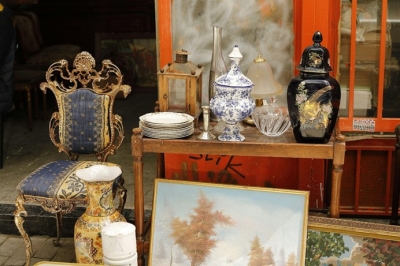Sorting through family heirlooms can be one of the hardest parts of downsizing for a move. While some keepsakes hold deep sentimental meaning, others may not fit your lifestyle or space. The challenge comes when no one in the family wants to keep them. That doesn’t mean they have to end up in a storage box or, worse, in the trash.
There are thoughtful, guilt-free ways to handle unwanted heirlooms that honor your family’s history while also giving you peace of mind.
Why do family heirlooms feel so hard to let go of?
When downsizing, many people face the emotional challenge of deciding what to do with family heirlooms no one wants. These items often carry sentimental value but can take up space you no longer have. Whether it’s your grandmother’s china set, vintage furniture, or boxes of genealogy records, guilt often plays a big role in why we hold on to them.
Just remember, memories aren’t stored in objects alone. They live in the stories we tell, the photos we keep, and the traditions we pass on. Letting go of unwanted family heirlooms doesn’t erase your family history, it creates space for a more uncluttered future.
Tip: Ask yourself serious questions about why you feel obligated to keep certain items and whether it’s worth the associated costs.
How can you preserve memories without keeping everything?
Have you asked yourself, “How can I preserve family memories without keeping every item?” Digital tools now make this easier than ever. Vintage family photographs, Ellis Island records, and even ancestral memorabilia can be scanned or photographed and archived online. This creates a permanent, shareable record for future generations.
By digitizing items, you give your family access to important history while freeing yourself from the obligation of storing bulky keepsakes. It also prevents family disputes over this inheritance because everyone can enjoy the same archive.
Tip: Consider using a professional organizer or a digital archiving service to help you sort and preserve memories while downsizing family heirlooms.
What if no one wants the items?
It can be disheartening to realize that your children or grandchildren don’t want to keep certain family keepsakes. The question then becomes, “What is the best way to let go of unwanted family heirlooms?” Options include selling, donating, or repurposing items.
 Selling heirlooms can help offset the expense of moving. Still, there may be an opportunity cost to selling a family heirloom in that some items may be more valuable as memories than as cash.
Selling heirlooms can help offset the expense of moving. Still, there may be an opportunity cost to selling a family heirloom in that some items may be more valuable as memories than as cash.- Donating family heirlooms to museums, libraries, or local historical societies can allow the community to appreciate them.
- Repurposing heirlooms, like turning a quilt into wall art or transforming old silverware into jewelry, gives items new life.
Tip: Before making final decisions, consider offering keepsakes to extended relatives or family friends who may value them, even if your immediate family does not.
How do you handle the guilt of letting go?
Guilt is one of the biggest obstacles when deciding what to do with inherited items that no one wants. Emotional decluttering often means facing feelings of responsibility toward past generations. Many people fear they’re dishonoring loved ones by parting with inherited belongings.
The truth is that honoring your family’s legacy doesn’t mean keeping every object. Memory preservation techniques such as storytelling, photo albums, or recording family history help you carry on a generational legacy without keeping unwanted family heirlooms. It’s okay to let go of sentimental clutter if the items no longer serve you or your family.
Tip: Remind yourself that letting go of inherited guilt makes space for the parts of your family history that matter most.
What are creative ways to repurpose old heirlooms?
Repurposing heirlooms provides a guilt-free way to preserve history while downsizing. Old family furniture can be refinished to match modern décor. Jewelry can be reset into updated designs. Even items like linens can be cut and sewn into smaller keepsakes, allowing you to share them among several family members.
Creative reuse ensures that family history artifacts live on in a practical form. Instead of gathering dust in storage, these items can become part of daily life. Repurposing heirlooms also helps avoid the stress of deciding whether to sell or donate items that still carry emotional weight.
Tip: Work with artisans who specialize in repurposing heirlooms to create meaningful and functional keepsakes.
How can professional movers help?
Downsizing often means making dozens of difficult decisions about what to do with heirlooms and other items that no one in the family needs. Experienced moving companies can simplify this process by connecting you with reliable estate clean‑out services, coordinating donations to charities and thrift shops, and providing secure storage for belongings you’re not ready to part with. With help from downsizing specialists, you can approach emotional decluttering with greater confidence.
Tip: When planning a downsizing move, ask your chosen mover about specialized support to simplify your move while respecting your family’s legacy.
Make peace with your family keepsakes
Figuring out what to do with sentimental items no one wants doesn’t have to be overwhelming. Whether you choose to sell, donate, repurpose, or digitize, there are practical, guilt-free solutions that honor your family history while supporting your future. Downsizing family heirlooms is about keeping the stories alive, not the clutter.


